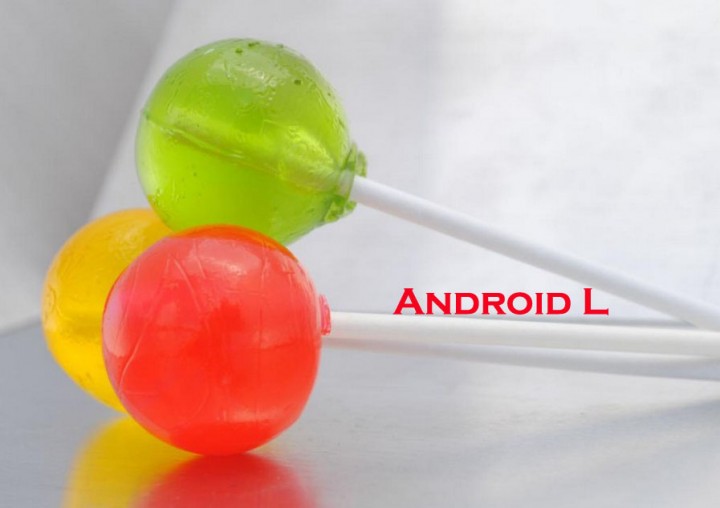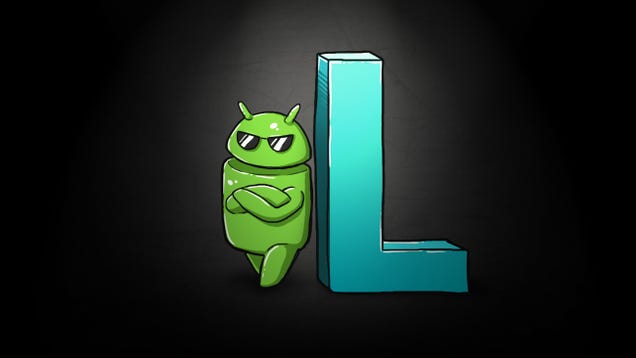 |
| Android L |
Android L is an upcoming release of the Android mobile operating system developed by Google. Unveiled on June 25, 2014, and released in a beta the next day for selected Google Nexus devices, it is expected to be released in late 2014.
The most prominent changes to L include a redesigned user interface built around a responsive design language referred to as "Material Design", and improvements to the notification system which allow them to be accessed from the lock screen, and displayed within other apps as banners across the top of the screen. Internal changes were also made to the platform, with the Android Runtime officially replacing Dalvik for improved application performance, and changes intended to improve and optimize battery usage.
Development
Android L was first unveiled on June 25, 2014 during a keynote presentation at the Google I/O developers' conference. Alongside L, the presentation focused on a number of new Android-oriented platforms and technologies, including Android TV, in-car platform Android Auto, wearable computing platform Android Wear, and health tracking platform Google Fit. It does not yet have a formal version number or codename.
Part of the presentation was dedicated to a new cross-platform design language referred to as "Material Design". Expanding upon the "card" motifs first seen in Google Now, it is a cleaner design with increased use of grid-based layouts, responsive animations and transitions, padding, and depth effects such as lighting and shadows. Designer Matías Duarte explained that "unlike real paper, our digital material can expand and reform intelligently. Material has physical surfaces and edges. Seams and shadows provide meaning about what you can touch." The material design language will not only be used on Android, but across Google's suite of web software as well, providing a consistent experience between applications and platforms.
Features
Android L introduces a refreshed notification system. Individual notifications are now displayed on cards to adhere to the material design language, and batches of notifications can be grouped by the app that produced them. Notifications are now displayed on the lock screen as cards, and notifications can also be displayed as large banners across the top of the screen, along with their respective action buttons. A do-not-disturb feature is also added for notifications. The recent apps menu was redesigned to use a three-dimensional stack of cards to represent open apps. Individual apps can also display multiple cards in the recent menu, rather than only one entry per app; for example, a web browser can show all of its open tabs as individual cards.
Android L also contains major new platform features for developers; 5,000 new APIs were added for use by apps, and the Dalvik virtual machine was officially replaced by Android Runtime (ART), a new environment introduced as a technology preview in KitKat. ART is a cross-platform runtime which supports the x86, ARM, and MIPS architectures in both32-bit and 64-bit environments. Unlike Dalvik, which uses just-in-time compilation (JIT), ART compiles apps upon installation, which are then run exclusively from the compiled version from then on. This technique removes the processing overhead associated with the JIT process, improving system performance.
Android L also aims to improve battery consumption through a series of optimizations known as "Project Volta". Among its changes are a new battery saver mode, job scheduling APIs which can restrict certain tasks to only occur over Wi-Fi, and batching of tasks to reduce the overall amount of time that internal radios are active. The new developer tool called "Battery Historian" can be used for tracking battery consumption by apps while in use. The Android Extension Pack APIs also provide graphics functions such as newshaders, aiming to provide PC-level graphics for 3D games on Android devices.
A number of system-level, enterprise-oriented features were also introduced under the banner "Android for Work": Samsung contributed its Knox security framework for segregating personal and work-oriented data from each other on a device, along with accompanying APIs for managing the environment, and bulk app purchases for Google Play Store. Devices can also be configured so that users can bypass the need to enter an unlock PIN or pattern can be if it is within a certain geographical location or in proximity to the user's Android Wear device.
Release
A developer preview of Android L was released for the Nexus 5 and 2013 Nexus 7 on June 26, 2014, as a replacement factory image flashed in Fastboot mode. The final release is expected to be made in late-2014. Source code for the developer preview was released via Android Open Source Project (AOSP) in July 2014.
HTC has committed to preparing updates to Android L for its HTC One and One M8 smartphones "within 90 days of receiving final software from Google."

This work is licensed under a Creative Commons Attribution-ShareAlike 3.0 Unported License.




 07:57
07:57
 Planet Worldwide
Planet Worldwide



 Posted in:
Posted in:
0 comments:
Post a Comment